Guaranteed First-Timer’s Guide To Visit Nagasaki in 3 Days (Updated 2025)
May 11, 2024
Last Updated on March 9, 2025 by Erin Donahue
As part of my two-week trip through Japan, along with Tokyo and Fukuoka, this Nagasaki 3-day itinerary breaks down everything to do if you plan a visit. Nagasaki, a city on Kyushu island, became one of two tragic locations where the U.S. dropped atomic bombs during WWII. While fewer tourists visit this hilly city compared to its northern counterparts on Honshu, Nagasaki offers plenty to see and do, as listed below.
Nagasaki has a lot of history and things to do but doesn’t have a metro system. The main way to get around are trolleys and buses for public transportation. These get PACKED. Additionally, for a big city, Nagasaki has no nightlife, with everything shutting down after 8 pm, and not re-opening until 8-9 am. For visitors who have early call times like I did, finding food was scarce. The best bet is to stock up from the grocery store the night before.
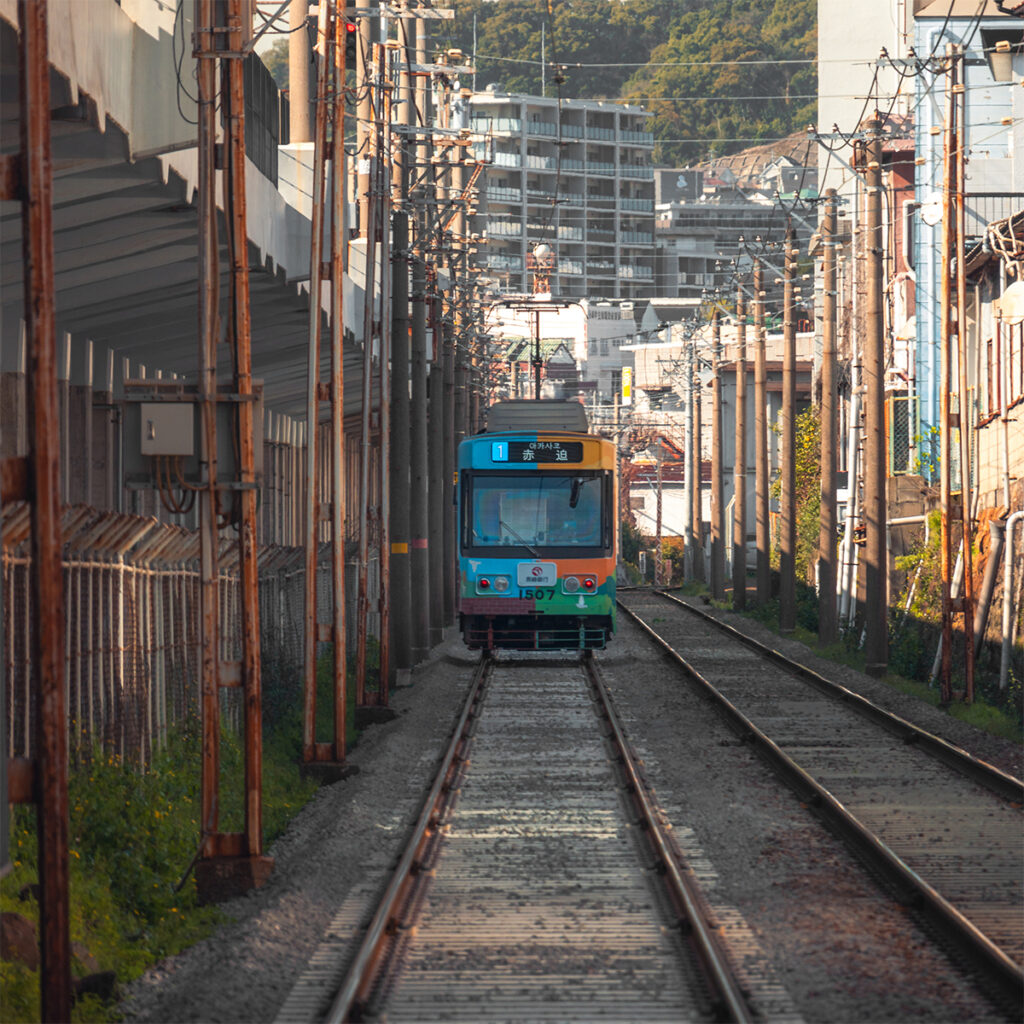
The Peace Park (平和公園)
It’s only appropriate to visit The Peace Park while in Nagasaki. At this ground zero location, the B-29 bomber Bockscar dropped the second A-bomb, named Fat Man, at 11:02 AM on August 9, 1945.
Nagasaki Peace Park stands atop a hill north of the bomb’s hypocenter. Central to the park is the towering Peace Statue, reaching 9.7 meters high, embodying the fervent wish of Nagasaki’s inhabitants for lasting peace. Crafted by local sculptor Seibou Kitamura, the statue has a myriad of symbolic meanings. The statue raises its right hand skyward, symbolizing the looming threat of nuclear weapons, while extending its left arm horizontally to gesture for eternal peace. The right leg folds in meditation while the left leg roots to the ground, calling us to stand up and help the world. Buddha is a heavy inspiration and the statue’s face embodies Buddha’s divine compassion and love. This part isn’t as readily available, but the hair is also symbolic of Jesus’ hair.
Address: 9 Matsuyamamachi, Nagasaki, 852-8118
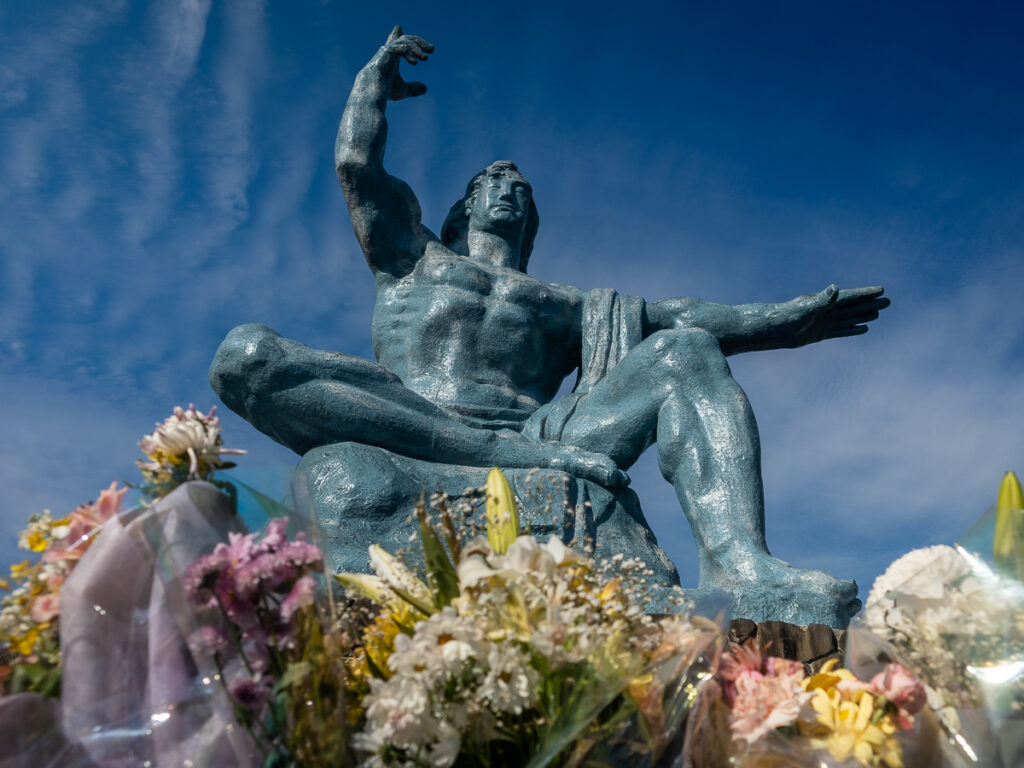
Nagasaki Ropeway (長崎ロープウェイ)
Summit Mt. Inasa’s observatory via a five-minute tram ride, to see one of Japan’s top 3 night views, along with Sapporo and Kitakyushu, for a 360-degree view of Nagasaki, the harbor, and the sea. This view ranks among the world’s top 3 night views, alongside Shanghai & Monaco. Who’s making these designations though? I’d like to know!
This scenic spot is famous for its multi-million dollar night view of Nagasaki, but I’d recommend going up before sunset. Visitors can watch the sun descend over the city and on a clear day Gunkan-jima, Taka-shima, Io-jima, and Goto Islands can be seen.
Address: 〒850-0066 Nagasaki, Inasamachi, 364 稲佐山公園
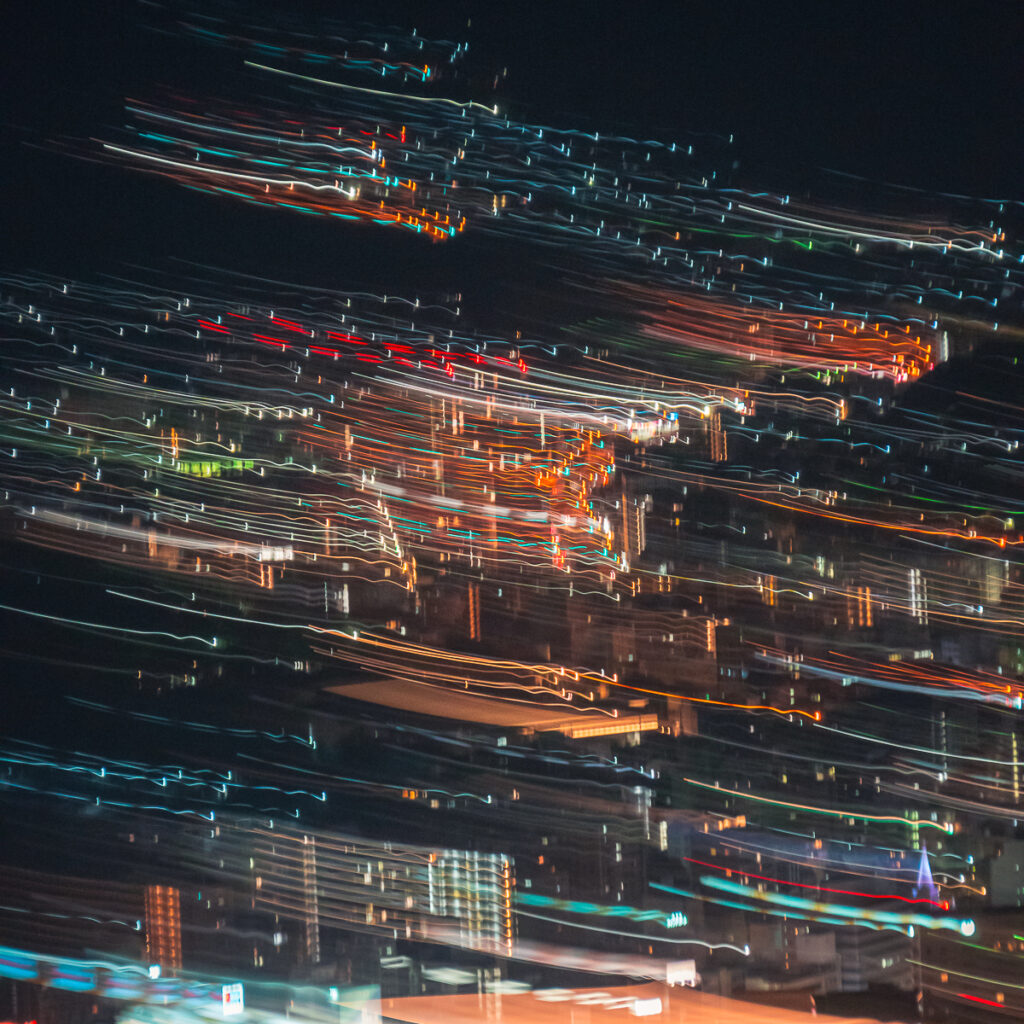
Glover House & Garden (グラバー園)
Part of Nagasaki’s rich history is its involvement as a window of Western influence. Take a stroll through the gardens which include the former Glover Residence, another UNESCO World Heritage Site. The Nagasaki Shipyard of Mitsubishi Heavy Industries generously donated this historic site to Nagasaki in 1957.
Glover House is Japan’s oldest wooden Western-style residence that was home to Thomas Blake Glover. He was a Scottish merchant who contributed a great deal to Japan’s modernization. This residence, along with its gardens, has since been open to the public, offering visitors a glimpse into its rich history.
Address: 8 Minamiyamatemachi, Nagasaki, 850-0931
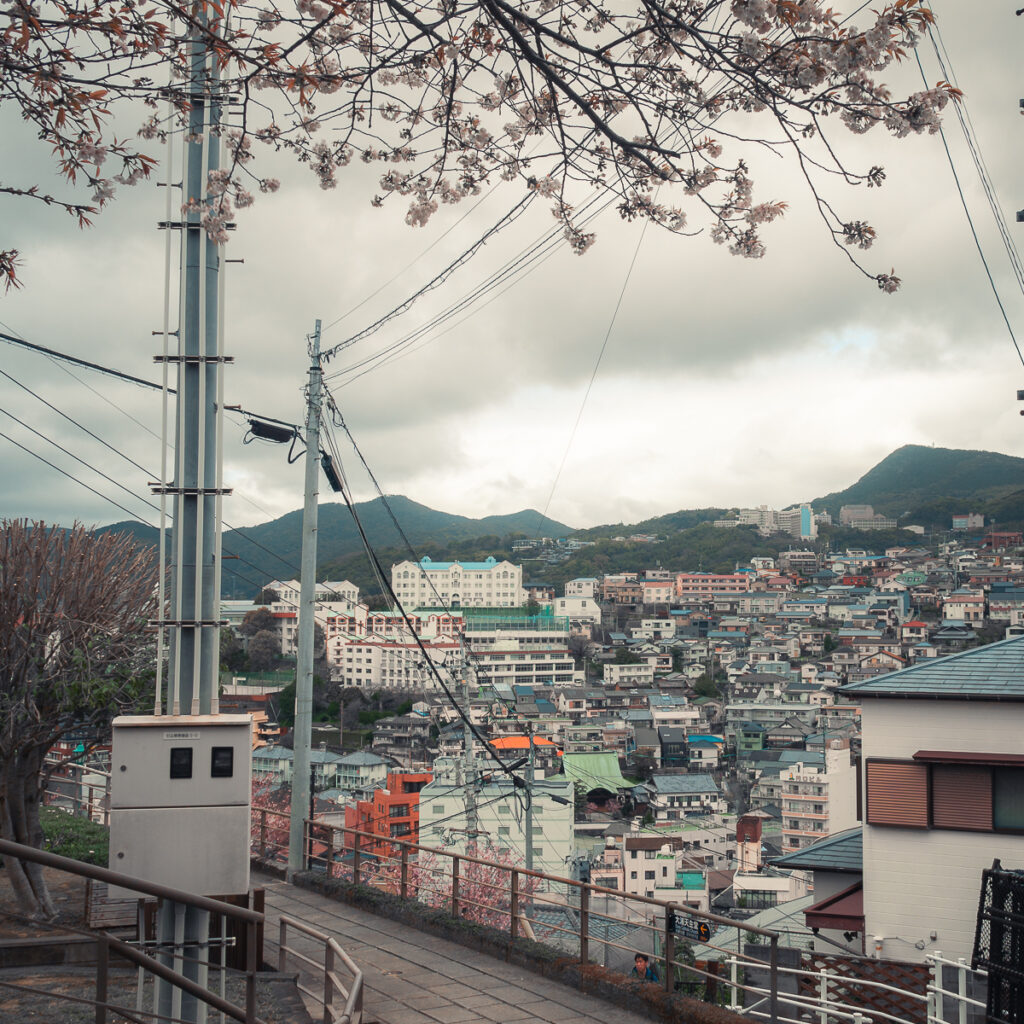
Visit Hashima Island (端島) “Gunkanjima (軍艦島)” Before It Closes
A unique experience while in Nagasaki includes walking the ruins of Hashima Island, nicknamed Gunkanjima which translates to “battleship island” because of how it looks. UNESCO has designated this as a World Heritage Site, and authorities will soon permanently close the island to preserve it. If you want to see this place, book a landing tour immediately. A ferry takes 40 minutes to reach the island, and the Captain makes last-minute decisions about landing permission based on weather conditions.
One thing that I wasn’t aware of until afterward was that part of Gunkanjima’s history includes forced labor, particularly of Koreans. It’s no secret that Japan’s colonial rule was abhorrent, and the history between the Japanese and Koreans is not positive. The tour on Gunkanjima will talk about how crucial the coal mine was to support Japan’s modernization but say nothing of the labor involved.
Address: 5-6, Matsugaemachi, Nagasaki-shi, Nagasaki, 850-0921
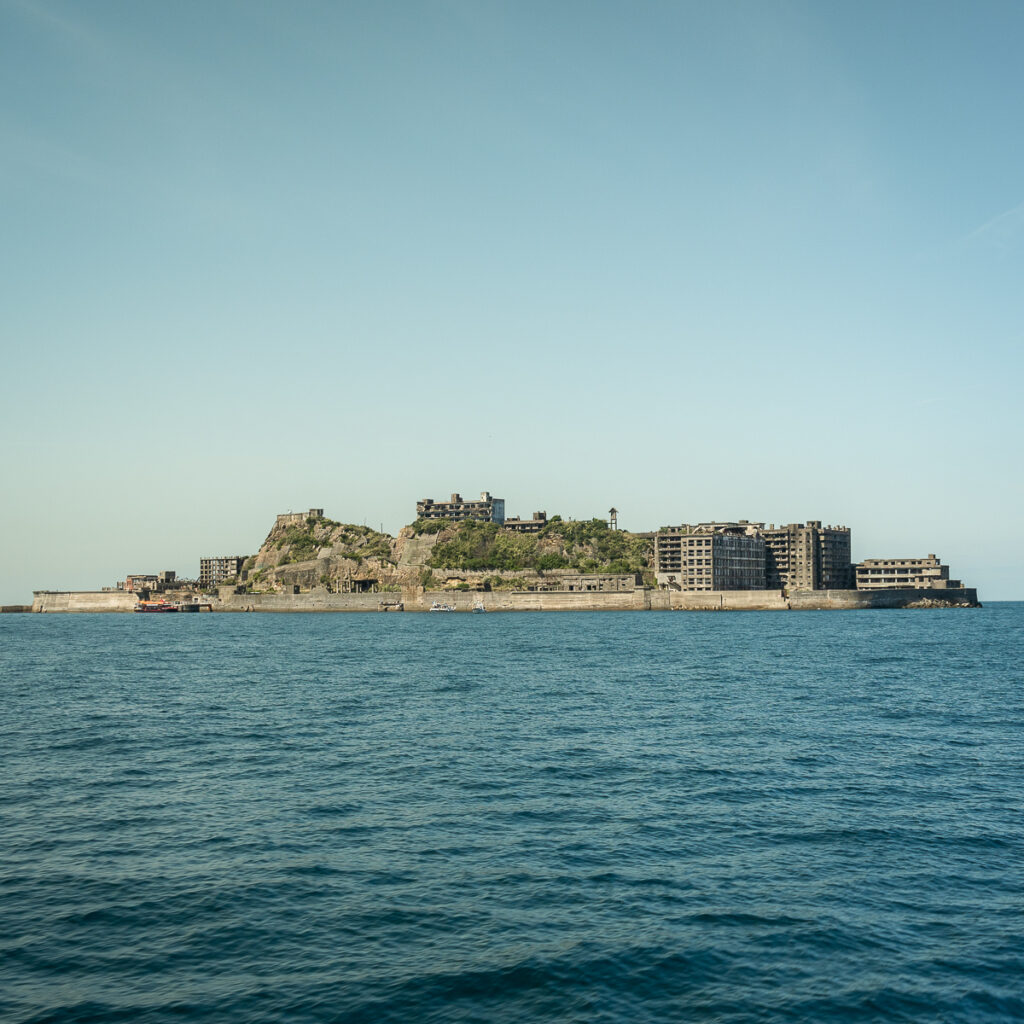
Stop By The Megane Bridge (眼鏡橋)
The over 300-year-old Meganebashi Bridge in Nagasaki, Japan takes its name from its distinct “spectacles” double-arched shape. This unique bridge stands out as the only double-arched structure among the single-arched bridges. While it’s an iconic symbol, it was rather underwhelming. Nevertheless, its historic architecture and central location in Nagasaki make it a popular spot for photography.
Address: Uonomachi, Nagasaki, 850-0874
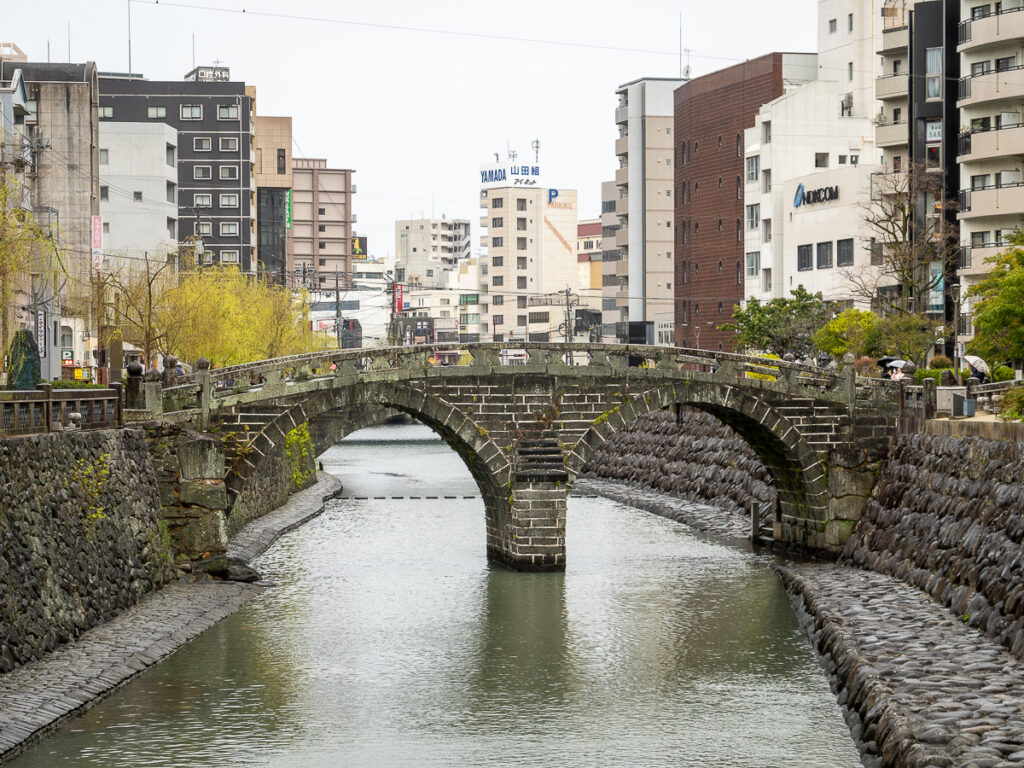
Enjoy Afternoon Tea At Shooken Cafe Sevilla
Lastly, treat yourself to some afternoon tea and enjoy castella cake at Cafe Sevilla. The soft, golden Castella cake features a moist texture and sugary sweetness. As a major sweet tooth myself, drinking tea while eating this cake is a must. It comes in a distinctive rectangular shape sold in long boxes and makes for a great gift!
Nagasaki’s famous castella cake tradition began when Cafe Sevilla opened as the first castella cake company in 1681. Castella Cake is originally from Spain, but the Japanese have incorporated it into their own. You can’t get this brand in Tokyo, only Nagasaki and Fukuoka.
Address: 3-19, Uonomachi, Nagasaki-city, Nagasaki
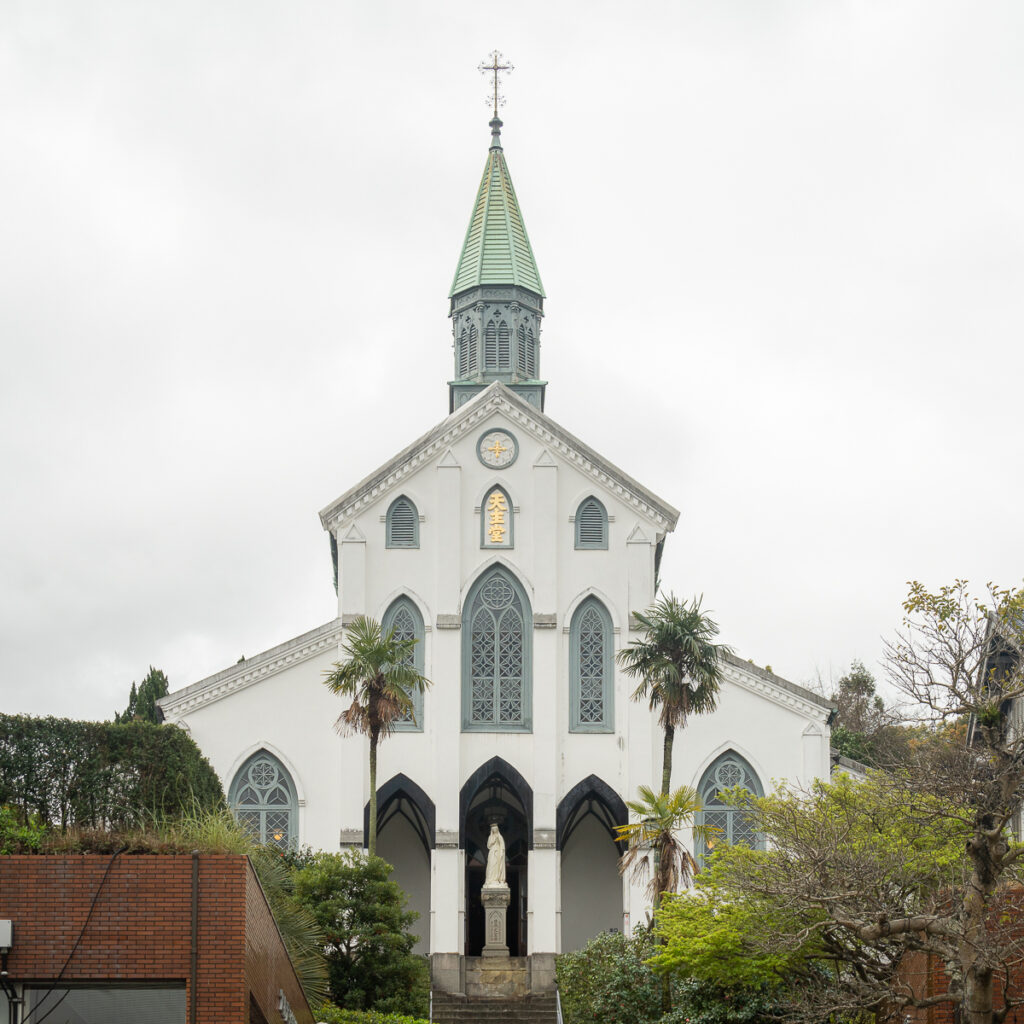
Watch on YouTube
To keep up to date with everything I share, follow along on my social media and read up on what camera gear I use when I travel.
Leave a Reply Cancel reply
© Erin Donahue Creative LLC, All Rights Reserved
Terms of Service & Privacy Policy